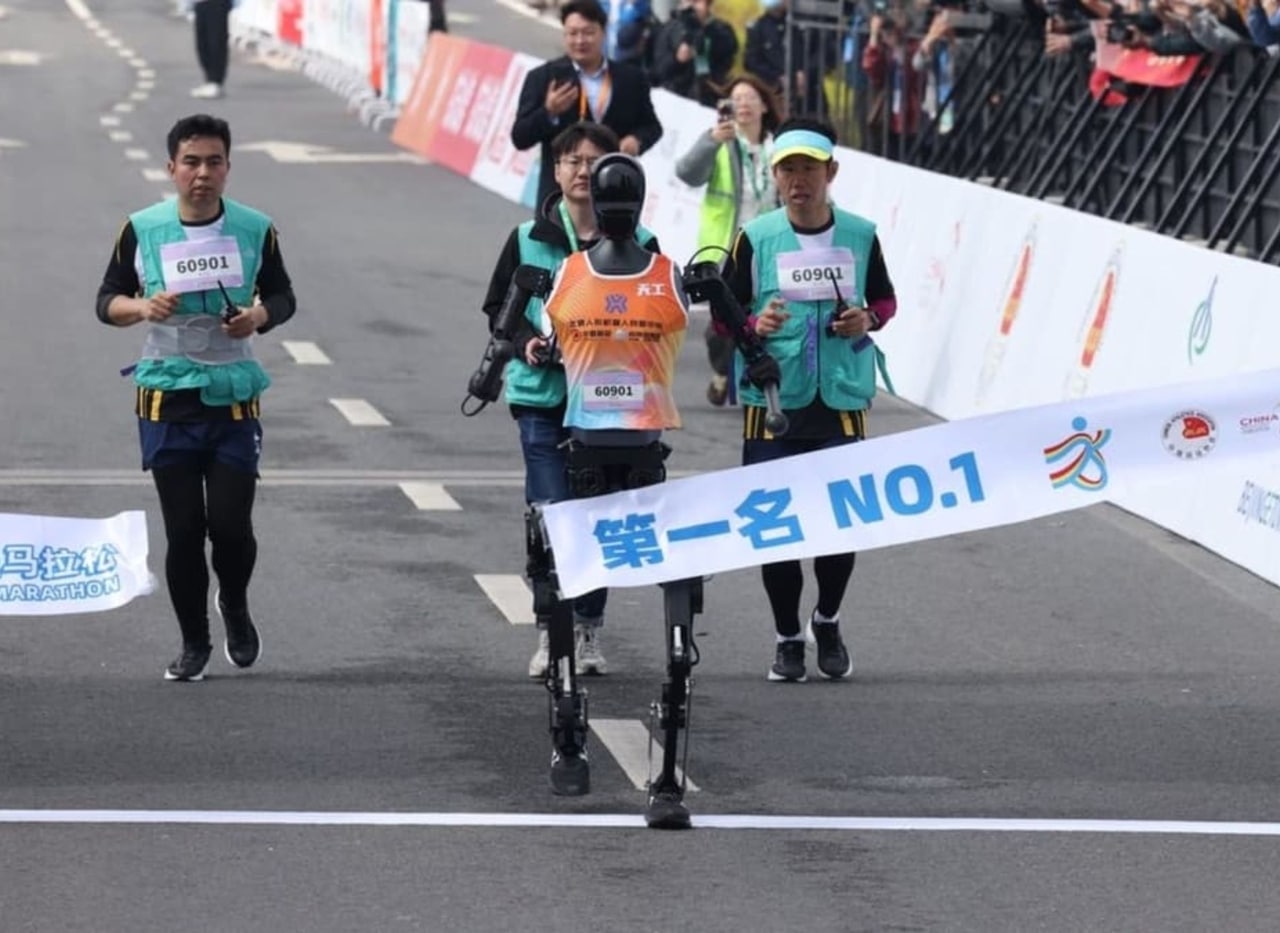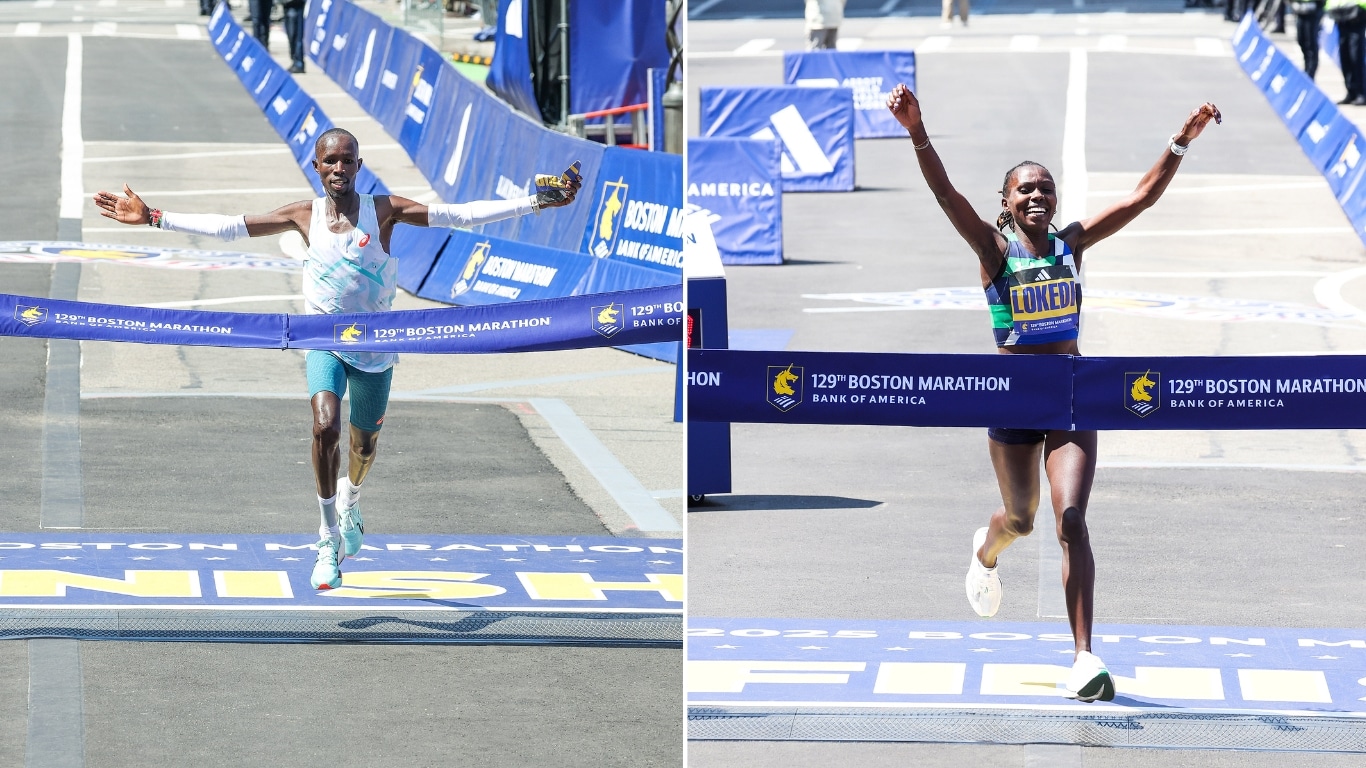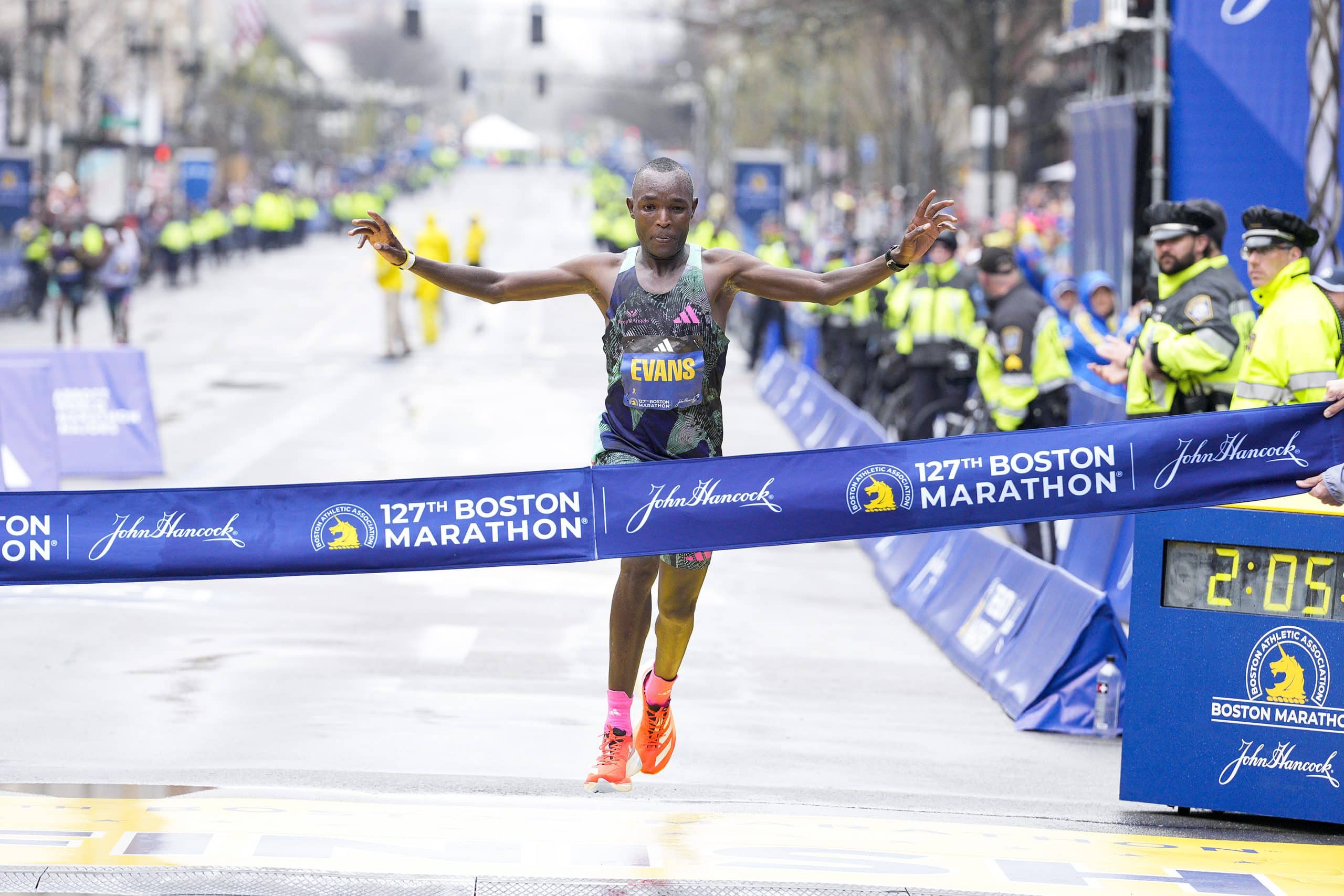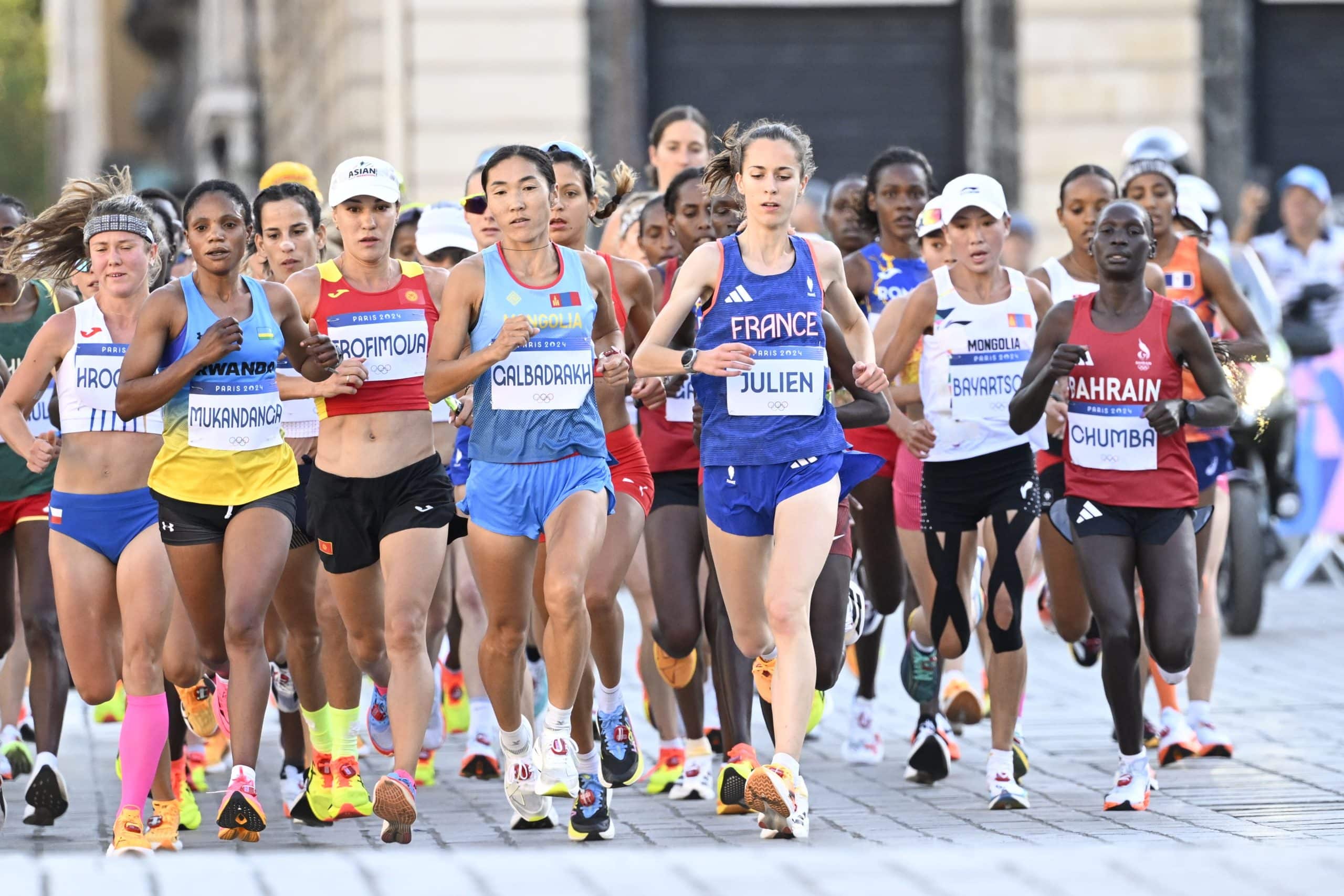Race Against the Machine: Robots Take to the Road During a Half Marathon in China
Robots running a half-marathon? No, it’s not a bizarre Pixar synopsis. It’s real life, and it happened in China during the Yizhuang half-marathon, in the southeastern suburbs of Beijing. Twenty-one humanoid machines embarked on over 21 kilometers, alongside thousands of flesh-and-blood, sweaty runners. Between a series of falls, battery breakdowns, and acrobatic finishes, the spectacle was worth seeing. The robots didn’t win, but they certainly made us run… into the future.
“Run Robot Run.” We thought we’d seen it all in the world of running. Participants running in sandals, marathoners dressed as giant bananas, Axel Ramponi in a three-piece suit under 2:50… but no. China decided to take it a step further: making 1.80m, 52kg humanoid robots run a half-marathon. Yes, robots. Not electric scooter followers or camera drones. Articulated bipeds that attempted to complete the 21 km and 97.5 meters of the Yizhuang half-marathon in Beijing’s suburbs on April 19. Held in the “E-Town,” a technological development zone of the capital, it was the first time such a technological venture was tested over such a long race.
I Why are they running?
Beyond the show-off effect, this robotic half-marathon was a huge test. For AI research, for locomotion technologies, for energy management, and dynamic balance. Basically: running straight for 21 km is a puzzle for a machine. But if we can achieve it, future applications are incredible: assistive robots in disaster zones, intelligent exoskeletons, advanced urban mobility… Running is just an excuse. But a good one, because almost everyone understands what it means to run 21 kilometers without stopping.
I On one side, robots, and on the other, fit humans
The symbolism is clear: 21 robots started, 6 finished. It’s few but still huge, knowing that most of them had never run more than a few hundred meters before. On the start list, it was an odd casting: heavier and lighter robots – weighing up to 88 kg for the heftiest – coming from all provinces of China. A two-speed race: of autonomy… and of the joystick. They ran on a dedicated course (not crazy), accompanied by human operators ready to intervene in case of a fall, glitch, breakdown or need for a recharge.
On the pavement, there was a real parade of styles: some robots moved as if they had “Marathon Man” in their memory card, others seemed to be discovering their legs. Most made decisions on their own, calculation after calculation, while others patiently awaited orders from afar. One ended up falling but got back up on its own, stoic, like “I’m fine, everything’s fine.” Another, more muscular, took an unexpected detour to greet a barrier. Meanwhile, humans filmed everything from their lane, half-amused, half-bewildered. Frankly, who would have thought the half-marathon would become a robot comedy theater?
I 1:01 vs 2:40: human advantage in the flesh
Meanwhile, on the human side, it went a lot faster. The Kenyan Mutiso Kibet finished the race in 1:01:10, while the first woman, Ethiopian Gelana Dida, completed it in 1:08:29. Light-years away from the best robot of the day. This bipedal machine, specifically, is Tiangong Ultra, a kind of Chinese version of Boston Dynamics. It completed the 21.1 km in 2:40, with three battery changes, a fall, and some manual adjustments. For context, that’s the time of a well-trained amateur runner but still far behind elite standards.
« Running on a track might seem like a small step for a human. But for a humanoid robot, it’s truly a giant leap. »
Liang Liang, deputy director of the E-Town management committee
Tang Jian, the technology director at the Beijing Center for Humanoid Robot Innovation, the institution that built the best participating robot from scratch, told the press he is “very satisfied” before adding: “We had three goals: to win first place, to complete the entire half-marathon with a single robot […] and to finish the race in under three hours,” he admitted. “We collected data from professional runners and trained the robot to adapt its stride, cadence, stride length, and posture to get as close as possible to that of an athlete.” Last Thursday, when Liang Liang stated to AFP: “Running on a track might seem like a small step for a human. But for a humanoid robot, it’s truly a giant leap,” the deputy director of the E-Town management committee wasn’t just making a clever remark. He signed off with a well-calibrated, almost solemn phrase that places the event in a far broader perspective than just a sports demonstration. For the best and for sport.
I A little comparison for a laugh (or concern)
| Runner | Half Marathon Time | Nationality / Type |
|---|---|---|
| Jacob Kiplimo | 56:42 (world record) | Uganda / Turbo Human |
| Mutiso Kibet | 1:01:10 | Kenya / 2025 Winner |
| Axel Ramponi (in costume) | ~1:24 (estimated) | France / Style Personified |
| Tiangong Ultra | 2:40 | China / Robocop |
| 15 remaining robots | DNF | China / Fallen Office Chairs |
I A real technological test… but not yet a sporting feat
What the event also reveals is that humanoid robots are starting to really run. They no longer walk awkwardly, stuttering pre-programmed phrases: they jog, fall, get back up, move forward. But for now, they are not autonomous. They require operators, manual battery changes, interventions in case of mechanical issues. In short, they don’t yet have the ‘finish line spirit’. But if we laugh at it today, we might speak differently in ten years. Technological progress is astounding. Today, these machines complete a half-marathon in 2:40 overheating. Tomorrow, they could very well run a marathon in under 2 hours, the utopia of marathoners.
Okay, let’s calm down immediately. For now, robots mostly sweat through their printed circuits, and they need an entire crew to cross a finish line. But this Yizhuang half-marathon might be the very beginning of a major shift: where endurance will no longer just be a matter of heart, thighs, and mental strength, but also of lines of code and lithium-ion.
So no, they haven’t (yet) surpassed us, these mechanical humanoids. But they are there, on the same starting line, and they’re moving faster and faster. And if one day you’re overtaken by a robot at kilometer 19 of the Paris Marathon… at least you can be sure it won’t snatch your Finisher medal at the refreshment station. Not yet, anyway.



